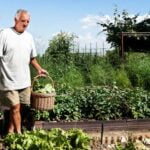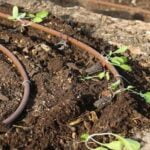Are you interested in growing your own vegetables but have limited outdoor space? Container gardening may be the solution for you. In this article, we will explore the benefits of container gardening for vegetable plants and provide essential tips for successful container gardening. We will also discuss the best vegetable plants for container gardening and how to plant and care for them in containers.
Container gardening is a practical and convenient way to grow vegetables, especially for those with limited space or no access to a traditional garden. With the right containers and proper care, you can enjoy a bountiful harvest of fresh, homegrown vegetables right on your patio, balcony, or even indoors. Whether you are new to gardening or consider yourself an experienced green thumb, container gardening can be a rewarding and enjoyable pursuit.
In the following sections, we will delve into the benefits of container gardening for vegetable plants, discuss how to choose the right containers, provide essential tips for successful container gardening, explore the best vegetable plants suited for containers, and offer creative ideas for maximizing space and efficiency in your container garden.
Whether you are a novice gardener or looking to expand your existing garden space with containers, this article will guide you through everything you need to know about growing good vegetable plants in containers.
Benefits of Container Gardening for Vegetable Plants
Container gardening offers numerous benefits for growing vegetable plants. Whether you have limited outdoor space, poor soil conditions, or simply want to add greenery to your patio or balcony, container gardening can be a convenient and enjoyable way to grow your own vegetables. Here are some of the key benefits of container gardening for vegetable plants:
1. Flexibility: With container gardening, you have the flexibility to move your vegetable plants around as needed to optimize sunlight exposure or protect them from harsh weather conditions.
2. Pest Control: Container gardening can help minimize pest infestations, as it’s easier to spot and address issues in a smaller, contained space compared to traditional garden beds.
3. Accessibility: For individuals with physical limitations or those who struggle with bending and kneeling, container gardening provides easy access for planting, watering, and harvesting vegetable plants.
In addition to these benefits, container gardening allows for greater control over soil quality and drainage, making it an ideal option for growing a wide variety of vegetables in a small space. When choosing good vegetable plants for container gardening, consider options such as:
These vegetables thrive in containers and can provide a bountiful harvest even in limited spaces. By selecting the right vegetables and following essential tips for successful container gardening, you can enjoy the rewards of homegrown produce right outside your doorstep.
Choosing the Right Containers for Vegetable Plants
When it comes to choosing the right containers for vegetable plants in container gardening, there are a few key factors to consider. The size and material of the container, as well as its drainage capabilities, can greatly impact the success of your vegetable garden. Here are some essential tips for selecting the best containers for your vegetable plants:
- Size: Choose containers that are large enough to accommodate the mature size of the vegetable plant. For example, deep-rooted plants like tomatoes or peppers will need larger pots, while shallow-rooted plants like lettuce or herbs can thrive in smaller containers.
- Material: Opt for containers made from breathable materials like terracotta or wood, as they allow for better air circulation to the roots. Plastic pots are also a popular choice due to their affordability and lightweight nature.
- Drainage: Ensure that your chosen containers have adequate drainage holes to prevent waterlogged soil, which can lead to root rot. You can also add a layer of rocks or gravel at the bottom of the pot to improve drainage.
In addition to these considerations, it’s important to match the container with the specific needs of each vegetable plant. Some vegetables may require deeper pots for robust root formation, while others may do well in hanging baskets or window boxes. By carefully selecting the right containers for your vegetable plants, you can set them up for success and promote healthy growth.
Ultimately, choosing the right containers for your vegetable plants is an essential step in creating a thriving container garden. With proper consideration of size, material, and drainage, you can provide an optimal growing environment for your chosen vegetables. By taking these factors into account, you’ll be on your way to cultivating a bountiful harvest of fresh produce in your container garden.
Essential Tips for Successful Container Gardening
When it comes to successful container gardening, there are several essential tips that can help ensure your vegetable plants thrive in their confined environment. The first step is to choose the right size and type of container for the specific vegetable plant you intend to grow. For example, larger vegetables like tomatoes or peppers will need a bigger container with plenty of room for root growth, while smaller plants like lettuce or herbs can thrive in smaller pots.
In addition to selecting the right containers, it’s important to use high-quality potting soil that is specifically formulated for container gardening. This type of soil will provide the necessary nutrients and drainage that vegetable plants need to flourish. It’s also important to ensure that your containers have adequate drainage holes to prevent waterlogged roots, which can lead to rot and other problems.
Another essential tip for successful container gardening is to monitor the moisture levels of your vegetable plants regularly. Because containers can dry out more quickly than traditional garden beds, it’s important to water them consistently and check the soil moisture frequently. Additionally, consider using a layer of mulch on top of the soil in your containers to help retain moisture and regulate temperature.
| Essential Tips | Details |
|---|---|
| Container Size | Choose an appropriate size for each vegetable plant. |
| Potting Soil | Use high-quality potting soil formulated for container gardening. |
| Drainage and Moisture | Ensure containers have proper drainage and monitor moisture levels regularly. |
Best Vegetable Plants for Container Gardening
When it comes to choosing the best vegetable plants for container gardening, there are several options that thrive in this environment. Whether you have limited outdoor space or simply want to maximize your gardening efforts, growing vegetables in containers can be a rewarding experience. Below are some of the top vegetable plants that are well-suited for container gardening.
Tomatoes
Tomatoes are one of the most popular vegetable plants for container gardening due to their bountiful harvest and versatility. With a wide variety of sizes and types available, tomatoes can easily adapt to growing in containers. Choose determinate varieties for smaller containers and indeterminate varieties for larger ones, giving consideration to the support structure they’ll need as they grow.
Peppers
Peppers, both sweet and hot varieties, are excellent choices for container gardening. They require a warm and sunny location, making them ideal for placement on patios or balconies where sunlight is abundant. Planting pepper plants in deep containers will allow for healthy root development and plentiful harvests throughout the season.
Herbs
While not traditional “vegetables,” herbs such as basil, rosemary, mint, and parsley are great additions to any container garden. Herbs thrive in small spaces and can be easily incorporated into mixed container plantings with other vegetables. Their compact size makes them perfect for windowsill gardens or small outdoor spaces.
These are just a few examples of good vegetable plants for container gardening. Other options include lettuce, spinach, carrots, radishes, and even dwarf varieties of squash or cucumbers. With proper care and attention to each plant’s unique needs, you can enjoy a bountiful harvest from your container garden regardless of the size of your outdoor space.
How to Plant and Care for Vegetable Plants in Containers
Growing vegetable plants in containers is a great way to enjoy fresh produce even if you have limited space. Many vegetables thrive in container gardens and can be easily cared for with the right techniques. When it comes to choosing the best vegetable plants for container gardening, there are several options to consider.
Some good vegetable plants for container gardening include:
1. Tomatoes: Compact varieties of tomatoes, such as cherry or grape tomatoes, are perfect for growing in containers. They require a large pot and plenty of sunlight, but with the right care, they can produce an abundance of flavorful fruits.
2. Peppers: Bell peppers and hot peppers can also be grown in containers. They need well-draining soil and at least 6 hours of sunlight per day. With regular watering and feeding, pepper plants can thrive in pots.
3. Lettuce: Leafy greens like lettuce are ideal for container gardening, as they don’t require a lot of space to grow. You can harvest individual leaves as needed, allowing the plant to continue producing throughout the season.
In addition to these examples, there are many other vegetable plants that can be successfully grown in containers. It’s important to choose varieties that are well-suited to your climate and growing conditions, as this will increase your chances of success.
When planting and caring for vegetable plants in containers, it’s crucial to provide the right growing conditions, including proper soil, water, sunlight, and nutrients. Regular maintenance is also important to ensure healthy growth and abundant harvests.
| Vegetable Plant | Container Size |
|---|---|
| Tomatoes | 5-gallon pot or larger |
| Peppers | 3-gallon pot or larger |
| Lettuce | 8-inch deep container or larger |
Common Mistakes to Avoid in Container Gardening
When it comes to container gardening, there are several common mistakes that beginners often make. Avoiding these pitfalls can help ensure a successful and bountiful harvest from your vegetable plants. By being aware of these mistakes, you can take proactive steps to prevent them and set yourself up for a thriving container garden.
Choosing the Wrong Container Size
One of the most common mistakes in container gardening is selecting the wrong size of containers for your vegetable plants. Some plants, such as tomatoes and peppers, require larger containers to accommodate their extensive root systems. Choosing containers that are too small can restrict root growth and lead to stunted or underproductive plants. It’s essential to research the specific needs of each type of vegetable plant you plan to grow and select appropriately sized containers to support their growth.
Improper Drainage
Another mistake that can spell disaster for your container garden is insufficient drainage. Without proper drainage, soil becomes waterlogged, leading to root rot and other issues that can harm your vegetable plants. To avoid this mistake, be sure to drill or puncture holes in the bottom of your containers before planting. Additionally, using a layer of gravel or small stones at the bottom of the container can help improve drainage by preventing soil from clogging the drainage holes.
Overcrowding
It’s easy to get carried away when planting vegetable plants in containers, but overcrowding is a common mistake that can negatively impact plant health and productivity. Overcrowded plants compete for nutrients, water, and sunlight, leading to stunted growth and lower yields.
Be sure to follow recommended spacing guidelines for each type of vegetable plant you’re growing and resist the temptation to pack too many plants into a single container. Remember that healthy spacing allows each plant to thrive individually and contribute more generously to your overall harvest.
By avoiding these common mistakes in container gardening, you can create an optimal environment for your vegetable plants’ growth and enjoy a plentiful yield throughout the growing season. With proper planning and care, container gardening can provide a rewarding experience and an abundance of fresh produce right at your fingertips.
Creative Ideas for Maximizing Space and Efficiency in Container Gardening
When it comes to container gardening, maximizing space and efficiency is essential for a successful harvest. With limited space, it’s important to get creative with how you arrange and utilize your containers. One great idea for maximizing space is vertical gardening. Utilizing trellises, hanging baskets, or stacking planters can help you grow more vegetables in a smaller footprint.
Another creative idea for maximizing efficiency in container gardening is companion planting. This involves planting different types of vegetables together that complement each other, such as planting tall plants next to shorter ones to provide shade or support. This not only saves space but also encourages biodiversity and can help naturally repel pests.
Additionally, consider using self-watering containers or incorporating a drip irrigation system to ensure efficient watering. This can save time and ensure that your vegetable plants are consistently receiving the water they need for healthy growth. Furthermore, rotating your crops by season can help maximize the use of your containers throughout the year, allowing you to grow a variety of vegetables.
By implementing these creative ideas for maximizing space and efficiency in container gardening, you can make the most out of your limited space and enjoy a bountiful harvest of good vegetable plants for container gardening.
Conclusion
In conclusion, container gardening offers a convenient and practical way to grow a variety of vegetable plants in limited space. With the right containers, proper care, and suitable plants, anyone can enjoy a successful harvest of fresh, home-grown produce. Whether you have a small balcony, patio, or just want to add greenery to your windowsill, container gardening allows you to reap the rewards of your labor regardless of space constraints.
When it comes to choosing good vegetable plants for container gardening, consider options such as tomatoes, peppers, lettuce, herbs, and even dwarf varieties of root vegetables. These plants thrive in containers and can provide you with a bountiful supply of fresh produce throughout the growing season. With some creativity and careful planning, you can make the most out of your limited space by growing a wide variety of vegetable plants in containers.
In the end, container gardening not only provides an opportunity to cultivate fresh vegetables but also brings joy and satisfaction from nurturing living plants. So go ahead and get started with your own container garden – enjoy the process of planting and caring for your chosen vegetable plants while looking forward to enjoying the delicious fruits (and vegetables) of your container gardening labor. Happy planting.
Frequently Asked Questions
What Is the Best Vegetable to Grow in a Container?
The best vegetable to grow in a container is lettuce. Lettuce has shallow roots and doesn’t need a lot of space to thrive, making it an ideal choice for container gardening. It also grows relatively quickly, allowing for multiple harvests.
What Vegetables Can I Plant in the Same Container?
When planting vegetables in the same container, it’s important to consider their individual growth habits and space requirements. Some vegetables that can be planted together in a container include cherry tomatoes and basil, or cucumbers and nasturtium. These combinations allow for efficient use of space and mutually beneficial growing conditions.
What Is the Best Plant Food for Vegetables in Pots?
The best plant food for vegetables in pots is a water-soluble fertilizer that is specifically formulated for container gardening. Look for a balanced fertilizer with equal parts nitrogen, phosphorus, and potassium to support overall plant health and production. It’s important to follow the application instructions carefully to avoid over-fertilizing the plants.

If you’re looking to get into vegetable gardening, or are just looking for some tips on how to make your current garden better, then you’ve come to the right place! My name is Ethel and I have been gardening for years. In this blog, I’m going to share with you some of my best tips on how to create a successful vegetable garden.





